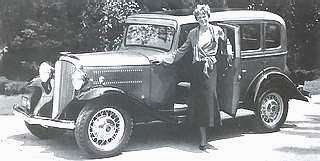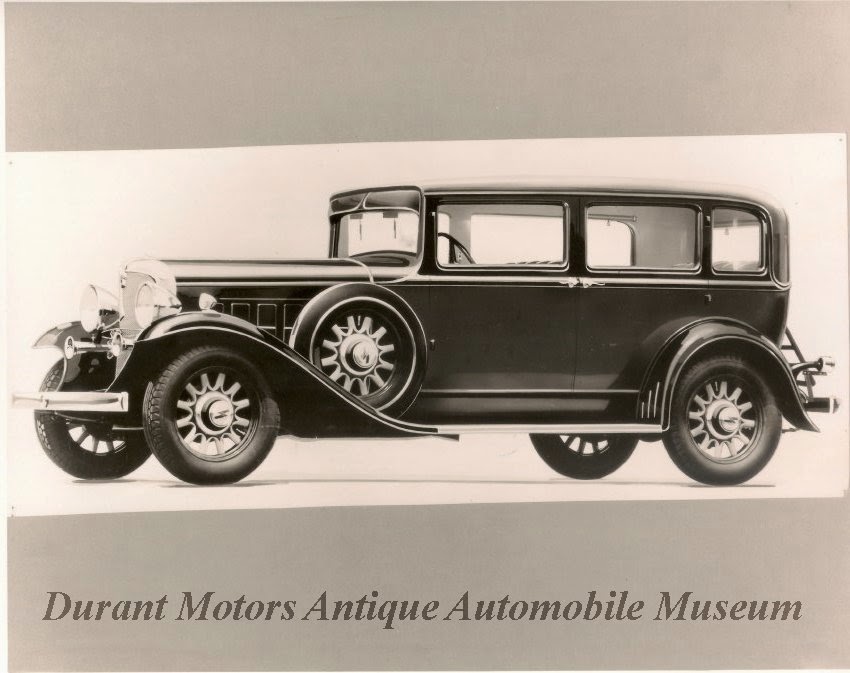From the big scrapbook of time, here’s a look at Canada in 1932--
 |
| Hupmobile ranges in price from $795 to $2,755. Based in Windsor, Ontario, a total of 263 Hupmobiles will be sold in eastern Canada in 1932. |
 |
| The HMCS Skeena is a river-class destroyer, launched last year. |
January 23:
Royal Canadian Naval vessels HMCS Skeena
and HMCS Champlain arrive in Acajutla, El
Salvador to evacuate British subjects and other foreigners attempting to escape
the civil war that has broken out in this small Central American country.
 |
| This is the 1932 Essex Terraplane Series E Sport Sedan with famed aviatrix, Amelia Earhart. |
February –
Assembly of Hudson and Essex cars begin at the Tilbury, Ontario plant.
February 4: The
Winter Olympics open to great fanfare in Lake Placid, New York. Canada will
come home with gold for hockey.
February 17: Mounties end of the
longest manhunts in law enforcement history as they cut down the Mad Trapper in
a hail of bullets. Albert Johnson of Rat River in the Yukon is wanted for
shooting police officers. He committed a crime spree that stretched more than
200 kilometres over a span of eight weeks.
March 5: In St. John’s, Newfoundland the House of
Assembly is attacked by a crowd estimated by police to be as large as 10,000
angry protesters. Newfoundlanders demand that an end be put to public
corruption. A furious mob smashes into the parliament building and trashes it.
Prime Minister Squires escapes in a taxi.
March 10: According to a report
issued by the House of Commons Committee on Broadcasting, there are 75 private
radio stations broadcasting to listeners throughout the Dominion.
March 30: The first V-8 Ford is
built at the factory in Windsor, Ontario. Company president Wallace Campbell
and W.F. Herman, publisher of the Border
Cities Star, take the shiny new sedan for a spin.
March 31: The public meets the
1932 Fords for the first time. The Windsor, Ontario automaker will sell 11,447
of the V-8 beauties throughout all nine provinces by the end of the year.
Another 16 Ford passenger cars will be shipped to the Dominion of Newfoundland.
April 1: Serving since 1917, the Alberta Provincial
Police are absorbed into the Royal Canadian Mounted Police as a Division of the
Mounties--as are the provincial police forces in Manitoba, New Brunswick and
Nova Scotia.
 |
| 1932 Durant 622 four-door sedan. |
April 1: Dominion Motors Limited
pays its last dividend. Maker of the Frontenac and Durant automobiles, the Leaside, Ontario
company will lose $668,961 by year’s end.
 |
April 9: It is a Leafs' nation! The Toronto Maple Leafs shut out the New York
Rangers in three games to take home the Stanley Cup.
April 30: Economic times are
tough enough that the legislature in Fredericton transfers control of the New
Brunswick Provincial Police force to the Royal Canadian Mounted Police.
May 1: As a cost-cutting measure, the RCMP will be the
police force on Prince Edward Island, replacing the PEI Provincial Police.
May 5: The Sons of Freedom, an
extreme faction of the Dukhobor sect, are in trouble with the law. A judge in
Nelson, British Columbia sentences 118 of them—including 34 women—for marching
and praying nude in public. Mounties have found stolen dynamite in sect
members’ possession, too.
 |
| The Parliament of Canada sits in Ottawa. |
May 16: Civil servants in Ottawa take a 10 percent
cut in pay. Though largely symbolic in nature, the gesture acknowledges that
times are tough right across the nation.
 |
| This 1932 CRBC drama is broadcast from studios in Montreal. |
May 24: The federal government announces that the
newly established Canadian Radio Broadcasting Commission will build a series of
powerful stations across the country because “the airwaves belong to the
people,” according to Prime Minister Bennett. The CRBC is a new name but the
network is made up of stations purchased from Canadian National Railways.
May 25: William Patrick Kinsella
is born in Edmonton. He will grow up to be a university professor and an
author. Among his novels will be Shoeless Joe.
It will be made into the 1989 movie, Field
of Dreams.
June 17: The oil tanker Cymboline, in port for repairs at the Vickers' Drydock in Montreal, explodes. The death toll is 21 and 64 more are injured. Many of the dead are firefighters. Flags are lowered to half mast in Montreal, in memory of the brave men who battled the fire. Damage is $1,000,000.
June 24: Mel Hurtig is born. He will grow up to be a
fierce promoter of all things Canadian and publish the landmark Canadian Encyclopedia in 1985.
July 18: The United States and
Canada sign a declaration to develop the St. Lawrence River into a seaway that
can handle ocean-going vessels as far inland as Lake Superior. The mega-project will be complete in 1959.
 |
| Lands coloured red show the Dominions and colonies of the British Empire. One out of every four people on earth live in the Empire. |
July 20: The Ottawa Agreements
are signed. This treaty creates a single trade zone within the British Empire.
Canada will do very well with this preferential trade pact.
July 22: Reginald Fessenden, the Father of Radio, is
dead at his winter home in Bermuda at the age of 65. Born in East Bolton,
Quebec, as a child, Fessenden actually watched Alexander Graham Bell conduct
experiments with the telephone.
 |
| Towards the Dawn is a powerful slogan for the newly minted CCF Party. |
August 1: There is a new
political party on the landscape as socialists, farmers and labour join forces
to create the Cooperative Commonwealth Federation at a convention in Calgary.
Its aim is to alleviate suffering caused by the Great Depression through public
cooperation and economic reformation. The name of the party will be changed to
the New Democratic Party in 1961.
August 6: The Governor General opens the fourth Welland Canal. The Right Honourable Earl of Bessborough declares the canal to be "open to the commerce of the world."
 |
| The largest of the Great Lake freighters, the SS Lemoyne is 192 metres (633 feet) in length and has a beam of 21.3 metres (70 feet). It is loaded with 14424 Metric tonnes (530,000 bushels 0of wheat. |
August 14: The Ninth Summer
Olympics close in Los Angeles. Canada earned two gold medals including one when
Duncan McNaughton of British Columbia won high-jumping gold when he cleared the
bar at 2.01168 metres (6 feet and 6 inches).
September 12: VOGY begins
broadcasting from studios in the Crosbie Hotel in St. John’s. Two years from
now the station will merge with VONF. In 1939 VONF will become Newfoundland’s
first public broadcaster and in 1949 the station’s call letters will be changed
to CBN—when it becomes part of the CBC.
September 25: Glenn Gould is born
in Toronto. He will grow up to become one of the world’s most famous pianists
and an unparalleled master of Beethoven interpretation. A stroke will be the
cause of his death in 1982.
 |
| Issued in 1923 and bearing the likeness of the Duke of Wales, the $2 bill will not change until 1935. |
October 8: With more than 25
percent of people without jobs, 70,000 men homeless and wandering the
countryside, the Department of National Defense is ordered to set up
civilian work camps. Once opened, the government will hire men at $2 a day to
work on public programmes.
 |
| The prison was built by prisoners and opened in 1873. |
November 7: Inmates at the St.
Vincent de Paul Penitentiary in Quebec riot and trash the facility in bid to
escape the notorious detention centre. It is the nation’s worst prison riot
ever with damage estimated at more than half a million dollars. The prison will close in 1989.
November 11: The Broadway Bridge opens in Saskatoon. The gracefu,l open spandrel deck art bridge was an early 'make work' project for the thousands of unemployed men in Saskatchewan. Work was only offered to married men with children. They were paid 45c an hour for their labour. Hours were determined by how large their families were.
November 11: The Broadway Bridge opens in Saskatoon. The gracefu,l open spandrel deck art bridge was an early 'make work' project for the thousands of unemployed men in Saskatchewan. Work was only offered to married men with children. They were paid 45c an hour for their labour. Hours were determined by how large their families were.
November 14: Townies have another new radio station to enjoy as VONF takes to the airwaves in St. John's, Newfoundland.
November 30: Dozens of explosions
rip through Montreal, destroying streets and buildings. Amazingly, no one is
killed. The worst of the damage is along the very busy St. Denis Street.
Authorities determine that a fire started in an underground gas line, causing
the horrific disaster.
December 3: The Hamilton Tigers
trounce the Regina Roughriders to take home the Grey Cup. The final score is 25
to 6 in front of a home crowd town of 4,086 spectators. Hamilton fans are ecstatic. This is the fifth year in a row that the Roughriders have made it to the finals and the fifth time the team has lost.
December 31: Oldsmobile production will add up to a total of 907 cars in 1932. The Sport
Coupe weighs in at 1446.96 kilos (3,190 pounds) and sells for $1,140 f.o.b. Oshawa.























No comments:
Post a Comment